Connect With Us
Blog
Items filtered by date: August 2022
Tendonitis in the Foot and Ankle
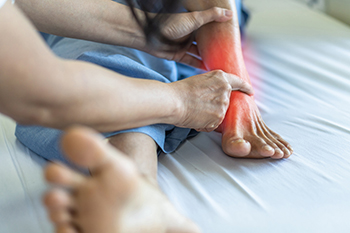
Tendons are thick bands of tissue that connect muscles to bones. The feet and ankles have a large number of tendons, any of which can become inflamed, a condition known as tendonitis. The main cause of tendonitis is overuse from repetitive movement. For that reason tendonitis is especially common to runners, because if a tendon is made to work too hard or too long it can develop tears. Other causes of foot and ankle tendonitis include an abnormal foot structure like flat feet or high arches, an injury, or a medical condition, such as gout or rheumatoid arthritis. The primary symptom of tendonitis in the foot or ankle is sharp, burning pain, often followed by swelling and stiffness. In many cases, tendonitis can be treated successfully, though the recovery period may take weeks, or even months. The first way to begin the process is to rest the painful area and cease the activity that caused it. If pain continues, or worsens, it is a good idea to visit a podiatrist for a thorough exam. The doctor may prescribe a variety of treatment options to ease the inflammation, including medication, orthotics, and exercises.
Foot and ankle trauma is common among athletes and the elderly. If you have concerns that you may have experienced trauma to the foot and ankle, consult with Dr. Howard Horowitz from Bowie Foot & Ankle . Our doctor will assess your condition and provide you with quality foot and ankle treatment.
Foot and ankle trauma cover a range of injuries all over the foot; common injuries include:
- Broken bones
- Muscle strains
- Injuries to the tendons and ligaments
- Stress fractures
Symptoms
Symptoms of foot and ankle injuries vary depending on the injury, but more common ones include:
- Bruising
- Inflammation/ Swelling
- Pain
Diagnosis
To properly diagnose the exact type of injury, podiatrists will conduct a number of different tests. Some of these include sensation and visual tests, X-rays, and MRIs. Medical and family histories will also be taken into account.
Treatment
Once the injury has been diagnosed, the podiatrist can than offer the best treatment options for you. In less severe cases, rest and keeping pressure off the foot may be all that’s necessary. Orthotics, such as a specially made shoes, or immobilization devices, like splints or casts, may be deemed necessary. Finally, if the injury is severe enough, surgery may be necessary.
If you have any questions, please feel free to contact our office located in Bowie, MD . We offer the newest diagnostic and treatment technologies for all your foot care needs.
Working On Your Feet While Pregnant
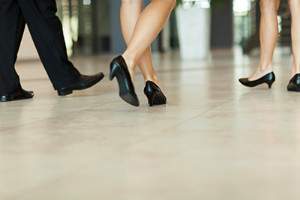
Many individuals throughout the American workforce spend a significant amount of the workday on their feet. For example, cooks, construction workers, and hairstylists spend most of their time on the clock standing on their feet. There are a few things to be mindful of, however, for pregnant women who hold jobs that require them to stand all day. Standing for prolonged periods while pregnant can not only be dangerous, but it can also be difficult or painful. It is recommended that pregnant women stand for no more than four or five hours while taking frequent breaks throughout the workday. Since pregnant women’s feet are prone to swelling, it is more important to listen to your body and give your feet the rest that they need. As the pregnancy progresses, a woman might notice standing becomes increasingly difficult throughout the workday. Pregnant women might choose to lie down during breaks as well as stay hydrated and elevate their feet. Working on one’s feet is certainly nothing to take lightly, particularly if you are pregnant or are planning to be. Consult with a podiatrist for the best advice on maintaining the health of your feet.
While working on the feet, it is important to take the proper care of them. For more information about working on your feet, contact Dr. Howard Horowitz from Bowie Foot & Ankle . Our doctor will treat your foot and ankle needs.
Working on Your Feet
Standing on your feet for long periods of time can cause stress and pain in your feet. Your whole body may experience change in terms of posture, back pain, bunions, callouses and or plantar warts. There are ways to avoid these conditions with proper foot care, smart choices and correct posture.
Positive Changes
Negative heeled shoe – Choosing this shoe type places the heel slightly lower than the ball of the foot. These are great for overall foot health. Find shoes that fit you correctly.
Go barefoot – Our feet were not designed to be enclosed for all hours of the day. Try to periodically expose your feet to air.
Eliminate Pain
Foot Exercises – Performing simple exercises, incorporating yoga and doing stretches are beneficial. This will allow increased blood flow to the area and muscles of the foot.
Achilles tendon – Stretching the foot out flat on the floor will relax the calf muscles and tendon. These exercises can be performed almost anywhere. Make sure you add these exercises to your daily regimen.
With a little bit of this information and knowing more about foot health, you will notice changes. Foot stretches and proper footwear will help with pain and prevent further issues.
If you have any questions please feel free to contact our office located in Bowie, MD . We offer the newest diagnostic and treatment technologies for all your foot and ankle needs.
How the Heel Works
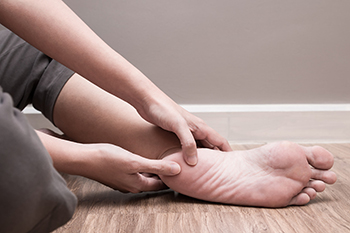
The heel is an integral part of your foot, and it plays an important role in helping the foot function. The heel is located at the back of the foot, and it is situated just below the ankle. The heel also sits right behind the arch of the foot. The heel is primarily composed of the calcaneus bone, which has a rectangular shape, and it is supported underneath by a fat padding and thick skin. In terms of biomechanics, the heel has two interesting and critical functions. First, when standing upright on both feet, a person is aided by the heel because it serves as a kind of weight-bearing support unit. In other words, the heel is stabilizing and protective. Second, when an individual is engaging in physical activities that involve motion (such as walking, running, or jumping), the heel acts as a type of lever which engages muscles in the calf. Taking care of the heel is important. Not only can the skin surrounding the heel become damaged through a condition known as cracked heels, the heel bone can also suffer from afflictions such as heel spurs. If you want to learn more about heels and how you can protect them, contact a trusted podiatrist.
If you have any concerns about your feet, contact Dr. Howard Horowitz from Bowie Foot & Ankle . Our doctor can provide the care you need to keep you pain-free and on your feet.
Biomechanics in Podiatry
Podiatric biomechanics is a particular sector of specialty podiatry with licensed practitioners who are trained to diagnose and treat conditions affecting the foot, ankle and lower leg. Biomechanics deals with the forces that act against the body, causing an interference with the biological structures. It focuses on the movement of the ankle, the foot and the forces that interact with them.
A History of Biomechanics
- Biomechanics dates back to the BC era in Egypt where evidence of professional foot care has been recorded.
- In 1974, biomechanics gained a higher profile from the studies of Merton Root, who claimed that by changing or controlling the forces between the ankle and the foot, corrections or conditions could be implemented to gain strength and coordination in the area.
Modern technological improvements are based on past theories and therapeutic processes that provide a better understanding of podiatric concepts for biomechanics. Computers can provide accurate information about the forces and patterns of the feet and lower legs.
Understanding biomechanics of the feet can help improve and eliminate pain, stopping further stress to the foot.
If you have any questions please feel free to contact our office located in Bowie, MD . We offer the newest diagnostic and treatment technologies for all your foot and ankle needs.
Who Gets Flat Feet?
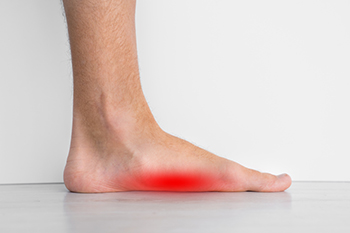
There are many kinds of foot conditions that may alter the natural structure of your feet. Flat feet are one such foot condition. Also known as fallen arches, flat feet are defined by the lack of a natural arch in the feet. Individuals with flat feet, for example, can stand upright on the ground with the sole of the foot pressing flush against the floor. Although flat feet are not typically considered a serious condition, they can make running and walking for extended periods more difficult. Some individuals are more apt to develop fallen arches. Infants are one commonly affected group, as their tendons and ligaments in the feet are not yet fully grown and tightened. However, by the age of two or three, fallen arches usually disappear. Another group is those who have muscle diseases. Individuals who suffer from cerebral palsy, for instance, might experience flat feet because of their muscle condition. Lastly, since flat feet can be caused by experiencing an injury to the foot, athletes and senior citizens who are prone to falling are also at risk of flat feet. If you fall into one of the aforementioned categories, contact a podiatrist to learn more about your susceptibility to flat feet.
Flatfoot is a condition many people suffer from. If you have flat feet, contact Dr. Howard Horowitz from Bowie Foot & Ankle . Our doctor will treat your foot and ankle needs.
What Are Flat Feet?
Flatfoot is a condition in which the arch of the foot is depressed and the sole of the foot is almost completely in contact with the ground. About 20-30% of the population generally has flat feet because their arches never formed during growth.
Conditions & Problems:
Having flat feet makes it difficult to run or walk because of the stress placed on the ankles.
Alignment – The general alignment of your legs can be disrupted, because the ankles move inward which can cause major discomfort.
Knees – If you have complications with your knees, flat feet can be a contributor to arthritis in that area.
Symptoms
- Pain around the heel or arch area
- Trouble standing on the tip toe
- Swelling around the inside of the ankle
- Flat look to one or both feet
- Having your shoes feel uneven when worn
Treatment
If you are experiencing pain and stress on the foot you may weaken the posterior tibial tendon, which runs around the inside of the ankle.
If you have any questions please feel free to contact our office located in Bowie, MD . We offer the newest diagnostic and treatment technologies for all your foot and ankle needs.
Wounds That Don't Heal Need to Be Checked
Two Categories of Clubfoot
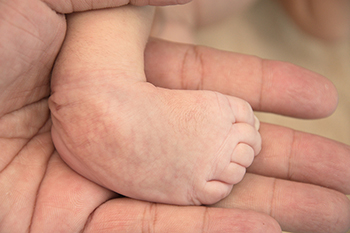
Clubfoot is a congenital foot disorder and affects approximately one to two babies per 1000. The medical term for this condition is congenital talipes equinovarus, which occurs when the child is born with a foot that points the wrong way. Walking is often affected because the foot cannot be placed flat on the ground. Clubfoot happens as a result of shortened tendons that connect the bones to the muscles, which can cause the foot to turn inward. This condition may be diagnosed by having an ultrasound performed during pregnancy, and treatment can start immediately after birth. Common treatment procedures include stretching the feet, in addition to wearing braces and plaster casts. Research has indicated there are two categories of clubfoot. Isolated clubfoot occurs when there are no other medical issues present. If there are various health conditions or neuromuscular disorders present at birth, it falls into the non-isolated clubfoot classification. Some of the problems that may occur if clubfoot is not promptly treated include arthritis, limited range of motion and mobility, and poor self image as the child grows. If your child is born with a clubfoot, it is strongly suggested that a podiatrist's advice is sought so the correct type of treatment can begin.
Congenital foot problems require immediate attention to avoid future complications. If you have any concerns, contact Dr. Howard Horowitz of Bowie Foot & Ankle . Our doctor can provide the care you need to keep you pain-free and on your feet.
Congenital foot problems are deformities affecting the feet, toes, and/or ankles that children are born with. Some of these conditions have a genetic cause while others just happen. Some specific foot ailments that children may be born with include clubfeet, polydactyly/macrodactyly, and cleft foot. There are several other foot anomalies that can occur congenitally. What all of these conditions have in common is that a child may experience difficulty walking or performing everyday activities, as well as trouble finding footwear that fits their foot deformity. Some of these conditions are more serious than others. Consulting with a podiatrist as early as possible will help in properly diagnosing a child’s foot condition while getting the necessary treatment underway.
What are Causes of Congenital Foot Problem?
A congenital foot problem is one that happens to a child at birth. These conditions can be caused by a genetic predisposition, developmental or positional abnormalities during gestation, or with no known cause.
What are Symptoms of Congenital Foot Problems?
Symptoms vary by the congenital condition. Symptoms may consist of the following:
- Clubfoot, where tendons are shortened, bones are shaped differently, and the Achilles tendon is tight, causing the foot to point in and down. It is also possible for the soles of the feet to face each other.
- Polydactyly, which usually consists of a nubbin or small lump of tissue without a bone, a toe that is partially formed but has no joints, or an extra toe.
- Vertical talus, where the talus bone forms in the wrong position causing other bones in the foot to line up improperly, the front of the foot to point up, and the bottom of the foot to stiffen, with no arch, and to curve out.
- Tarsal coalition, when there is an abnormal connection of two or more bones in the foot leading to severe, rigid flatfoot.
- Cleft foot, where there are missing toes, a V-shaped cleft, and other anatomical differences.
- Macrodactyly, when the toes are abnormally large due to overgrowth of the underlying bone or soft tissue.
Treatment and Prevention
While there is nothing one can do to prevent congenital foot problems, raising awareness and receiving neonatal screenings are important. Early detection by taking your child to a podiatrist leads to the best outcome possible.
If you have any questions please feel free to contact our office located in Bowie, MD . We offer the newest diagnostic tools and technology to treat your foot and ankle needs.

